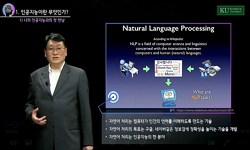Deep Learning as a Service (DLaaS), utilizing the cloud-based deep neural network models to provide customer prediction services, has been widely deployed on mobile cloud computing (MCC). Such services raise privacy concerns since customers need to se...
http://chineseinput.net/에서 pinyin(병음)방식으로 중국어를 변환할 수 있습니다.
변환된 중국어를 복사하여 사용하시면 됩니다.
- 中文 을 입력하시려면 zhongwen을 입력하시고 space를누르시면됩니다.
- 北京 을 입력하시려면 beijing을 입력하시고 space를 누르시면 됩니다.



Privacy-preserving and Communication-efficient Convolutional Neural Network Prediction Framework in Mobile Cloud Computing = Privacy-preserving and Communication-efficient Convolutional Neural Network Prediction Framework in Mobile Cloud Computing
한글로보기https://www.riss.kr/link?id=A107990222
-
저자
( Yanan Bai ) (Chongqing Institute of Green and Intelligent Technology) ; ( Yong Feng ) (Chongqing Institute of Green and Intelligent Technology) ; ( Wenyuan Wu ) (Chongqing Institute of Green and Intelligent Technology)

- 발행기관
- 학술지명
- 권호사항
-
발행연도
2021
-
작성언어
-
- 주제어
-
등재정보
KCI등재,SCIE,SCOPUS
-
자료형태
학술저널
- 발행기관 URL
-
수록면
4345-4363(19쪽)
-
KCI 피인용횟수
0
- 제공처
-
0
상세조회 -
0
다운로드
부가정보
다국어 초록 (Multilingual Abstract)
Deep Learning as a Service (DLaaS), utilizing the cloud-based deep neural network models to provide customer prediction services, has been widely deployed on mobile cloud computing (MCC). Such services raise privacy concerns since customers need to send private data to untrusted service providers. In this paper, we devote ourselves to building an efficient protocol to classify users’ images using the convolutional neural network (CNN) model trained and held by the server, while keeping both parties’ data secure. Most previous solutions commonly employ homomorphic encryption schemes based on Ring Learning with Errors (RLWE) hardness or two-party secure computation protocols to achieve it. However, they have limitations on large communication overheads and costs in MCC. To address this issue, we present LeHE4SCNN, a scalable privacy-preserving and communication-efficient framework for CNN-based DLaaS. Firstly, we design a novel low-expansion rate homomorphic encryption scheme with packing and unpacking methods (LeHE). It supports fast homomorphic operations such as vector-matrix multiplication and addition. Then we propose a secure prediction framework for CNN. It employs the LeHE scheme to compute linear layers while exploiting the data shuffling technique to perform non-linear operations. Finally, we implement and evaluate LeHE4SCNN with various CNN models on a real-world dataset. Experimental results demonstrate the effectiveness and superiority of the LeHE4SCNN framework in terms of response time, usage cost, and communication overhead compared to the state-of-the-art methods in the mobile cloud computing environment.
참고문헌 (Reference)
1 M. S. Riazi, "XONN: Xnor-based oblivious deep neural network inference" 1501-1518, 2019
2 J. Fan, "Somewhat practical fully homomorphic encryption" 2012 : 144-, 2012
3 X. Jiang, "Secure outsourced matrix computation and application to neural networks" 1209-1222, 2018
4 E. Hesamifard, "Privacy-preserving machine learning as a service" 2018 (2018): 123-142, 2018
5 J. Liu, "Oblivious neural network predictions via minionn transformations" 619-631, 2017
6 A. Paverd, "Modelling and automatically analysing privacy properties for honest-but-curious adversaries" Univ. Oxford 2014
7 T. H. Noor, "Mobile cloud computing : Challenges and future research directions" 115 : 70-85, 2018
8 N. Fernando, "Mobile cloud computing : A survey" 29 (29): 84-106, 2013
9 M. Ribeiro, "Mlaas: Machine learning as a service" 896-902, 2015
10 C. Ke, "Low expansion rate encryption algorithm based on mlwe" 46 (46): 144-150, 2019
1 M. S. Riazi, "XONN: Xnor-based oblivious deep neural network inference" 1501-1518, 2019
2 J. Fan, "Somewhat practical fully homomorphic encryption" 2012 : 144-, 2012
3 X. Jiang, "Secure outsourced matrix computation and application to neural networks" 1209-1222, 2018
4 E. Hesamifard, "Privacy-preserving machine learning as a service" 2018 (2018): 123-142, 2018
5 J. Liu, "Oblivious neural network predictions via minionn transformations" 619-631, 2017
6 A. Paverd, "Modelling and automatically analysing privacy properties for honest-but-curious adversaries" Univ. Oxford 2014
7 T. H. Noor, "Mobile cloud computing : Challenges and future research directions" 115 : 70-85, 2018
8 N. Fernando, "Mobile cloud computing : A survey" 29 (29): 84-106, 2013
9 M. Ribeiro, "Mlaas: Machine learning as a service" 896-902, 2015
10 C. Ke, "Low expansion rate encryption algorithm based on mlwe" 46 (46): 144-150, 2019
11 J. H. Cheon, "Homomorphic encryption for arithmetic of approximate numbers" 409-437, 2017
12 C. Juvekar, "GAZELLE: A low latency framework for secure neural network inference" 1651-1669, 2018
13 C. Gentry, "Fully homomorphic encryption using ideal lattices" 169-178, 2009
14 N. P. Smart, "Fully homomorphic SIMD operations" 71 (71): 57-81, 2014
15 W. Zheng, "Fighting fire with fire : A spatial–frequency ensemble relation network with generative adversarial learning for adversarial image classification" 36 (36): 2081-2121, 2021
16 E. Chou, "Faster cryptonets : Leveraging sparsity for real-world encrypted inference"
17 S. Li, "Falcon: A fourier transform based approach for fast and secure convolutional neural network predictions" 8705-8714, 2020
18 P. Mishra, "Delphi: A cryptographic inference service for neural networks" 2505-2522, 2020
19 B. D. Rouhani, "Deepsecure: Scalable provably-secure deep learning" 1-6, 2018
20 M. S. Riazi, "Deep learning on private data" 17 (17): 54-63, 2019
21 D. Shen, "Deep learning in medical image analysis" 19 : 221-248, 2017
22 R. Gilad-Bachrach, "Cryptonets: Applying neural networks to encrypted data with high throughput and accuracy" 201-210, 2016
23 M. S. Riazi, "Chameleon: A hybrid secure computation framework for machine learning applications" 707-721, 2018
24 B. Zhou, "Augmentation techniques for mobile cloud computing : A taxonomy, survey, and future directions" 51 (51): 1-38, 2019
25 M. Tavana, "An artificial neural network and bayesian network model for liquidity risk assessment in banking" 275 : 2525-2554, 2018
26 Z. Brakerski, "(Leveled)fully homomorphic encryption without bootstrapping" 6 (6): 1-36, 2014
동일학술지(권/호) 다른 논문
-
KI-HABS: Key Information Guided Hierarchical Abstractive Summarization
- 한국인터넷정보학회
- ( Mengli Zhang )
- 2021
- KCI등재,SCIE,SCOPUS
-
An Improved ViBe Algorithm of Moving Target Extraction for Night Infrared Surveillance Video
- 한국인터넷정보학회
- ( Zhiqiang Feng )
- 2021
- KCI등재,SCIE,SCOPUS
-
Study on Machine Learning Techniques for Malware Classification and Detection
- 한국인터넷정보학회
- ( Jaewoong Moon )
- 2021
- KCI등재,SCIE,SCOPUS
-
Generative Adversarial Networks for single image with high quality image
- 한국인터넷정보학회
- ( Liquan Zhao )
- 2021
- KCI등재,SCIE,SCOPUS
분석정보
인용정보 인용지수 설명보기
학술지 이력
| 연월일 | 이력구분 | 이력상세 | 등재구분 |
|---|---|---|---|
| 학술지등록 | 한글명 : KSII Transactions on Internet and Information Systems 외국어명 : KSII Transactions on Internet and Information Systems | ||
| 2023 | 평가예정 | 해외DB학술지평가 신청대상 (해외등재 학술지 평가) | |
| 2020-01-01 | 평가 | 등재학술지 유지 (해외등재 학술지 평가) |  |
| 2013-10-01 | 평가 | 등재학술지 선정 (기타) |  |
| 2011-01-01 | 평가 | 등재후보학술지 유지 (기타) |  |
| 2009-01-01 | 평가 | SCOPUS 등재 (신규평가) |  |
학술지 인용정보
| 기준연도 | WOS-KCI 통합IF(2년) | KCIF(2년) | KCIF(3년) |
|---|---|---|---|
| 2016 | 0.45 | 0.21 | 0.37 |
| KCIF(4년) | KCIF(5년) | 중심성지수(3년) | 즉시성지수 |
| 0.32 | 0.29 | 0.244 | 0.03 |




 ScienceON
ScienceON KISS
KISS






